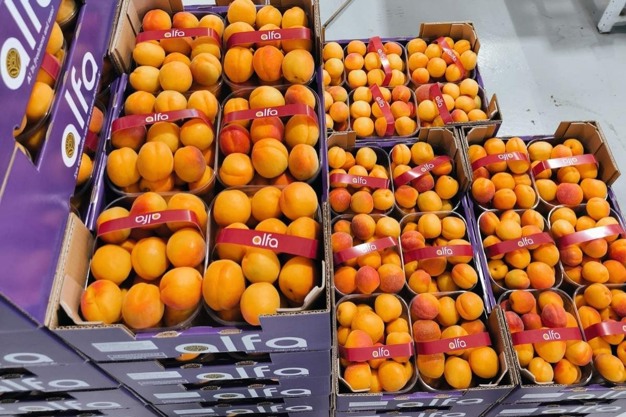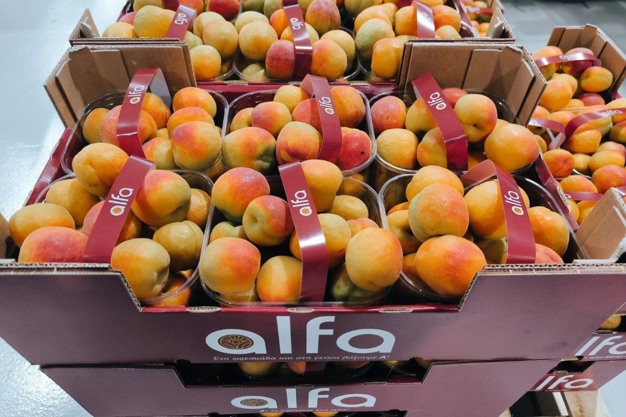The apricot harvest has begun in the Peloponnese, the earliest cultivation zone for this fruit in Greece. The frost in March and the hailstorms in April have left their mark on the region’s apricots, but unlike northern Greece, the damage in the Peloponnese is more limited.
“In the Peloponnese, we started harvesting apricots on April 30. However, normal volumes for early varieties begin around May 5. Very soon, the Mogador variety and other early apricots from the Cot series will follow,” says Mr. Grigoris Papoutsis, owner of the company Alfa Papoutsis, based in the Corinth area.
Mr. Papoutsis points out that the situation in the orchards is complex. “I can’t give you an accurate assessment of the damage. It’s complicated. In some areas, there were negative effects from frost, in others from hail, and in others from rainfall during the flowering period. In any case, the serious problem affects the late varieties in our region, such as Farbaly and Orange Red, as well as northern Greece. This means that major shortages will occur at the end of the Greek season.”

Alfa Papoutsis packaging with the first apricots of the new season.
“We prefer varieties that stand out for their taste, even if they may be inferior in appearance and post-harvest durability. We always sort the fruit by hand to protect its integrity and secure premium prices. So, starting May 15, we’re getting ready for the Maya Cot, Wonder Cot, and Cebas Red varieties. Exports mostly work with the Tiryntha and Tyrvi varieties. Tiryntha begins in late May, and Tyrvi in mid-June,” notes the Greek exporter.
As for this season’s prices, Mr. Papoutsis adds: “This year, producer prices are high—higher than last year. Overall, I think the season will close with an average producer price slightly above 2 euros per kilo. The lucky ones will be those with large volumes. I don’t know how many that will be.”

Alfa Papoutsis packaging with the first apricots of the new season.
According to the owner of Alfa Papoutsis, this year’s frequent rainfall has helped producers significantly reduce irrigation across all crops in the region compared to last year. Table grapes are another crop showing strong growth in Corinthia, both regionally and for the Greek company.
There’s still a long way to go before the grape harvest begins in Corinthia, so it’s too early to share estimations on the new season. However, Mr. Papoutsis comments on the current planting trends: “The three standout varieties in new, early plantings are Desert Pearl, Starlight, and ARRA 30. Among the late ones, growers prefer Sweet Celebration and Sugar Crisp. In Corinthia, there is a trend toward expanding grape cultivation, even at the expense of apricot orchards.”
For more information:
Grigoris Papoutsis
Alfa Papoutsis
Tel: +30 274 105 1950
Mob: +30 694 712 1138
Email: [email protected]
https://alfapapoutsis.gr/index_en.html
Source: The Plantations International Agroforestry Group of Companies
